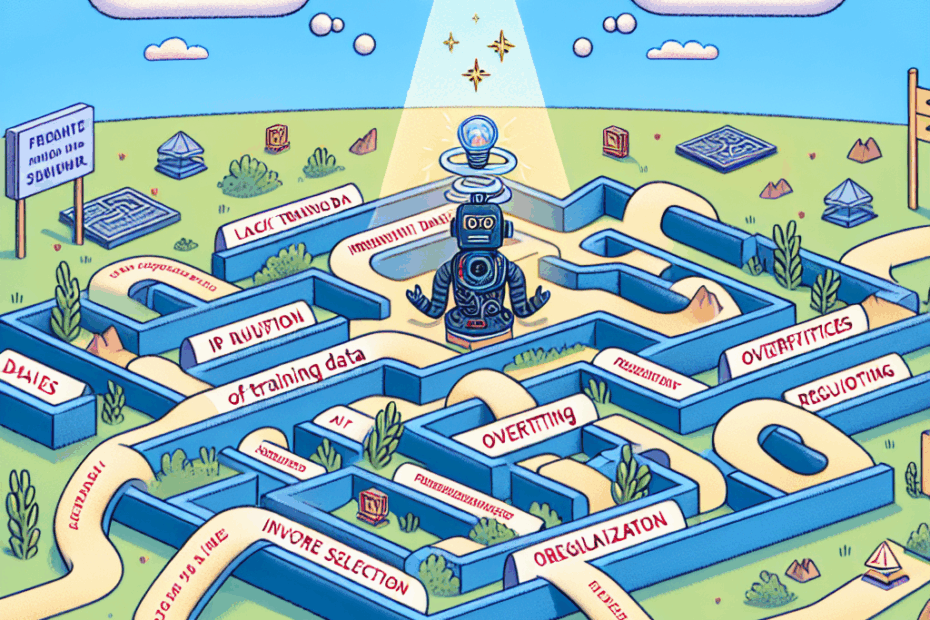“`html
Generative AI: Why Some Projects Fail and How to Succeed
Hey everyone, John here! Today, we’re diving into the world of generative AI, which is still pretty new in the business world. Sometimes, companies try to use these cool AI tools, but things don’t go as planned. Let’s explore why that happens and what we can do to make sure AI projects are a success.
Learning from the Cloud: What ‘Cloud First’ Teaches Us About ‘AI First’
Think back to when cloud computing was just starting out. Experts who were there have a lot of advice on how to make sure AI projects go smoothly. They know what to watch out for, kind of like seasoned sailors knowing how to avoid storms.
Key takeaway: Planning is super important! Just like building a house, you need a strong foundation before you can put up the walls and roof.
AI Agents: Why Aren’t We Seeing Results?
A lot of companies are investing in AI agents, but they’re not seeing the results they hoped for. It’s like planting a garden and not seeing any flowers bloom. Why is that?
Lila: John, what’s an AI agent? It sounds like something from a spy movie!
Well, Lila, think of an AI agent like a digital assistant that can perform tasks for you. It’s like having a super-efficient helper that can schedule meetings, answer emails, or even write code. The problem is, many companies haven’t set them up properly, so they’re not as helpful as they could be.
The Future is Connected: Agentic Mesh
The future of AI agents isn’t about them working alone. It’s about them working together in what’s called an “agentic mesh.”
Lila: Agentic mesh? Sounds complicated!
It’s simpler than it sounds! Imagine a team of superheroes. Each hero has their own special power, but they’re even stronger when they work together. An agentic mesh is similar – it’s a network of AI agents that can communicate and collaborate to solve complex problems. Instead of each agent being in its own little box, they’re all connected.
Key takeaway: AI agents work best when they work together. Think teamwork!
GenAI for Gathering Requirements: Helping with the Scut Work
AI can now help with the “scut work” (that’s the boring, tedious stuff!) of writing code. This makes gathering requirements (understanding what the software needs to do) even more important.
Lila: What are requirements, John?
Good question, Lila! Requirements are like the instructions you give someone when you ask them to build something. If you’re building a doghouse, the requirements would include things like: How big should it be? What kind of wood should you use? Does it need a door? In software, requirements are the details of what the program needs to do. Fortunately, AI can also help with figuring out what those requirements should be!
News Bites: Quick Updates on GenAI
- Leaderboard Illusion: Some big tech companies might be skewing the rankings of AI chatbots. It’s like cheating in a video game to make yourself look better.
- GenAI and Jobs: AI isn’t taking software engineering jobs (yet!), but it is changing the roles of leaders. Leaders need to understand how to use AI effectively.
- Microsoft’s AI Dev Gallery: Microsoft is showcasing AI tools for Windows. It’s like a store full of cool gadgets for developers.
AI Gone Wrong: When Chatbots Make Things Up
An AI customer service chatbot made up a company policy! This caused a lot of problems and made customers angry. It shows that AI can “hallucinate,” meaning it can create information that isn’t true.
Lila: Hallucinate? Like when you’re dreaming?
Kind of, Lila! In AI terms, hallucination means the AI makes up information or gives answers that are not based on real data. It’s like the AI is guessing, and sometimes it guesses wrong. This can be a big problem, especially in customer service or other important areas.
Key takeaway: Always double-check what AI tells you! Don’t trust it blindly.
Slopsquatting: A New Cyber Threat
AI hallucinations can lead to a new type of cyber attack called “slopsquatting.” This happens when AI writes code that depends on fake software packages. Then, bad guys create those fake packages and use them to spread malware (nasty software that can harm your computer).
The Hottest AI Job is… Obsolete?
It turns out that AI models are getting good at figuring out what users want. This means that writing perfect prompts (instructions for AI) might not be a career path anymore. The AI is becoming better at understanding what we’re trying to say, even if we don’t say it perfectly.
John’s Thoughts
It’s fascinating to see how quickly AI is evolving. The key is to remember that AI is a tool, and like any tool, it needs to be used carefully and thoughtfully. We need to focus on building strong foundations and ensuring that AI is used responsibly.
Lila’s Perspective
Wow, AI is both exciting and a little scary! I’m glad we’re talking about the risks, too. It sounds like we need to be careful and not just assume AI is always right.
This article is based on the following original source, summarized from the author’s perspective:
How generative AI rollouts fail, and how to fix them
“`
